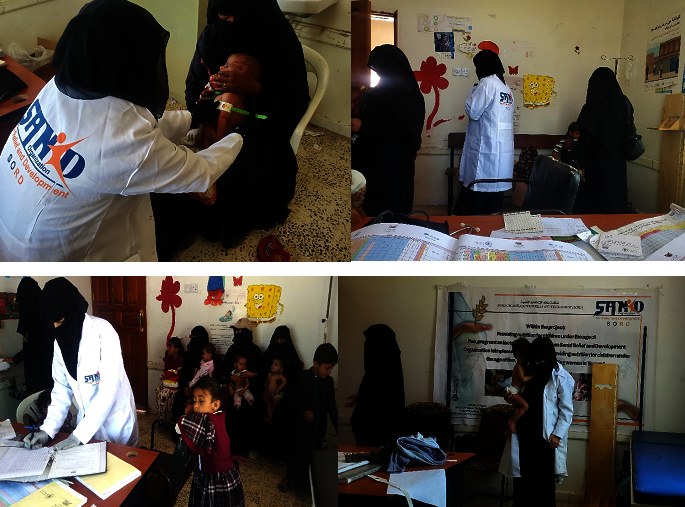By SHAIF Ahmed ALI EZADEEB | project Manager
Monthly Performan Addressing Malnutrition for Children Under Five and Pregnant and Lactating Women among IDPs and Host Communities
Report prepared by: Shaif Ahmed Ali Ezz El-Din
Report Overview
Project Name: Addressing Malnutrition for Children Under Five and Pregnant and Lactating Women among IDPs and Host Communities
Location: Sana'a, Yemen
Reporting Period: March 2025
Report Prepared by: Shaif Ahmed Ali Ezadeen
Contact Information: Programs.officer@sanid.org, 00967778515105
Project Highlights
Achievements
Challenges
Lessons Learned
Upcoming Activities
Based on the above, the following interventions were the most effective:
Overcoming the challenges identified above requires both innovative and pragmatic approaches to ensure sustainable impact. Here are some strategies tailored to each challenge:
1. Improving Healthcare Infrastructure
Resource Mobilization: Partner with international donors, NGOs, and local businesses to secure funds for renovating health centers and acquiring necessary equipment.
Public-Private Partnerships: Collaborate with private sector entities to co-fund infrastructure improvements.
2. Addressing Staff Salary Issues
Performance-Based Incentives: Work with donors to establish a system of incentives tied to service delivery milestones.
Advocacy: Engage government agencies and international bodies to prioritize healthcare workers' salaries in humanitarian aid packages.
Volunteer Programs: Train and mobilize community health volunteers to support understaffed centers.
3. Enhancing Support for Health Center Visitors
Community Outreach Programs: Increase awareness about available health services to manage visitor flow more effectively.
Resource Optimization: Use digital tools to monitor and allocate resources based on demand patterns in various centers.
4. Boosting Support and Donations
Storytelling for Fundraising: Share compelling success stories and visuals from the project to attract donors via platforms like GlobalGiving.
Networking: Strengthen relationships with existing donors and explore partnerships with non-traditional funding sources, such as philanthropic organizations.
5. Reaching Vulnerable Groups
Mobile Health Clinics: Deploy mobile teams to visit remote areas and cater to those unable to access health centers.
Barrier Reduction: Provide transport vouchers or organize community transport systems for individuals with mobility challenges.
This project is a vital component of broader humanitarian efforts in Yemen, specifically targeting malnutrition, which remains one of the most critical challenges in the region. Here's how it contributes to larger efforts:
1. Addressing Immediate Needs
By providing nutritional treatment and preventative care to vulnerable groups—children under five, pregnant women, and lactating mothers—the project directly tackles acute malnutrition, reducing the risk of severe health complications and mortality. This aligns with national and international goals to improve child and maternal health in Yemen.
2. Enhancing Healthcare Capacities
The project strengthens existing healthcare facilities by supplying essential resources and implementing training programs for healthcare workers. This capacity-building approach ensures sustainability and enhances the overall healthcare infrastructure, contributing to long-term resilience.
3. Coordinating with Broader Frameworks
The implementation of this project is integrated with guidelines from key organizations like UNICEF, WFP, and Yemen's Ministry of Health. This coordination ensures alignment with larger national nutrition strategies and international humanitarian frameworks.
4. Community Engagement
Through community outreach, education campaigns, and the involvement of community health volunteers, the project raises awareness and fosters local participation. This not only increases the program’s reach but also empowers communities to adopt preventive measures against malnutrition.
5. Data Collection and Insights
The project identifies high-need areas and collects valuable data on malnutrition trends, which can inform and influence other humanitarian interventions in Yemen, ensuring resources are directed to where they are most needed.
6. Addressing Broader Vulnerabilities
By targeting malnutrition, the program indirectly supports broader humanitarian priorities such as reducing child mortality, improving maternal health, and building resilient communities. The focus on vulnerable groups ensures that marginalized populations are not left behind.
This project represents a crucial piece of the puzzle in the collective effort to address the severe humanitarian crisis in Yemen
Certainly! The statistical outcomes presented in the report carry significant value, as they illustrate both the impact of the project and its alignment with broader goals. Here's a breakdown of their significance:
1. Demonstrating Project Reach
2. Identifying Gender Equity
3. Tracking Progress
4. Highlighting Community Engagement
5. Evidence for Advocacy
6. Informing Future Planning

By SHAIF Ahmed EZADEEB | project Manager
By Muhammad Abu Haider | project Manager
Project reports on GlobalGiving are posted directly to globalgiving.org by Project Leaders as they are completed, generally every 3-4 months. To protect the integrity of these documents, GlobalGiving does not alter them; therefore you may find some language or formatting issues.
If you donate to this project or have donated to this project, you can receive an email when this project posts a report. You can also subscribe for reports without donating.
Support this important cause by creating a personalized fundraising page.
Start a Fundraiser